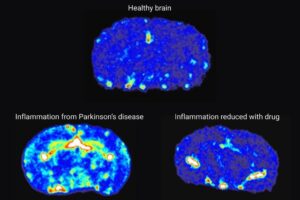
Physicist Stefano Profumo from the University of California, Santa Cruz, has introduced two innovative theories regarding the elusive nature of dark matter. His recent papers, published in the journal Physical Review D, suggest unconventional origins for the mysterious substance responsible for the gravitational effects observed throughout the Universe.
Profumo’s first theory, published in May 2025, posits that dark matter may originate from a “mirror” universe. In this scenario, particles similar to protons and neutrons exist, but they are composed of dark versions of these particles. This concept challenges traditional views of dark matter and opens new avenues for understanding its role in cosmic phenomena.
In his second paper, released in early July 2025, Profumo explores the idea that dark matter particles could have formed at the cosmic horizon, the boundary of the observable Universe. During the rapid expansion that occurred after the Big Bang, quantum fluctuations at this horizon might have spontaneously created dark matter particles with varying masses.
Profumo acknowledges the speculative nature of both theories, stating, “Both mechanisms are highly speculative, but they offer self-contained and calculable scenarios that don’t rely on conventional particle dark matter models, which are increasingly under pressure from null experimental results.”
Dark matter is one of the most significant and perplexing challenges in modern cosmology. It neither emits nor blocks radiation, making it impossible to detect directly. Scientists are aware of its existence due to the unexpectedly strong gravitational effects observed across the Universe; these effects cannot be fully explained by visible matter alone.
The term “dark matter” serves as a placeholder for the unknown entity that causes this gravitational excess. Numerous theoretical candidates have been proposed, ranging from massive celestial objects to fleeting particles. Despite extensive searches, none have been definitively confirmed.
To develop his theories, Profumo drew on principles from different areas of physics. His first theory relies on quantum chromodynamics, which explains the strong force binding quarks and gluons into particles like protons and neutrons. According to this framework, a hidden universe might coexist within our own, where a different strong force binds fundamental particles undetectable by our current models. Under specific conditions in the early Universe, these hidden particles could accumulate and form dark matter black holes, interacting with our visible Universe solely through gravitational means.
For his second hypothesis, Profumo utilizes concepts from quantum field theory at the cosmic horizon, akin to the event horizon of a black hole. This approach suggests that, following the Big Bang, accelerated expansion allowed quantum fluctuations to create dark matter particles.
While both explanations remain unconventional, they are grounded in established theoretical frameworks and present opportunities for future experimental verification. Profumo emphasizes that further research is necessary to refine these models, but they could significantly enhance our comprehension of the dark matter that permeates the Universe.
The studies underscore an evolving understanding of dark matter, a field that continues to intrigue scientists and the public alike.





